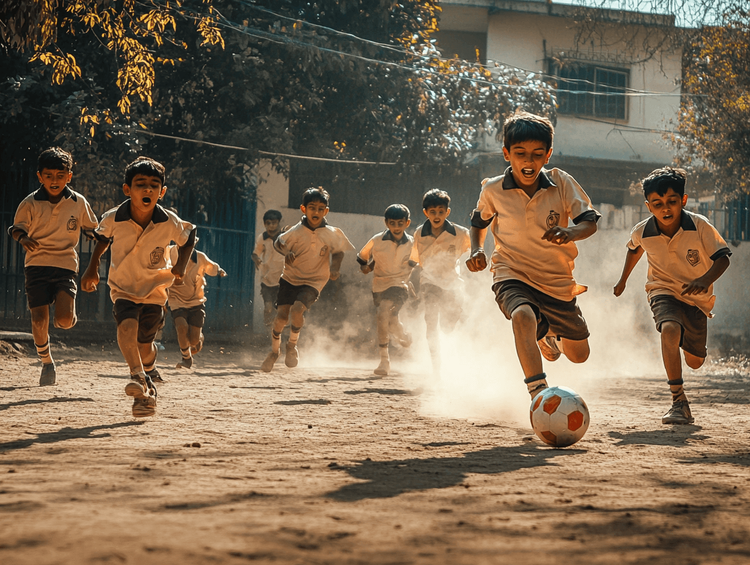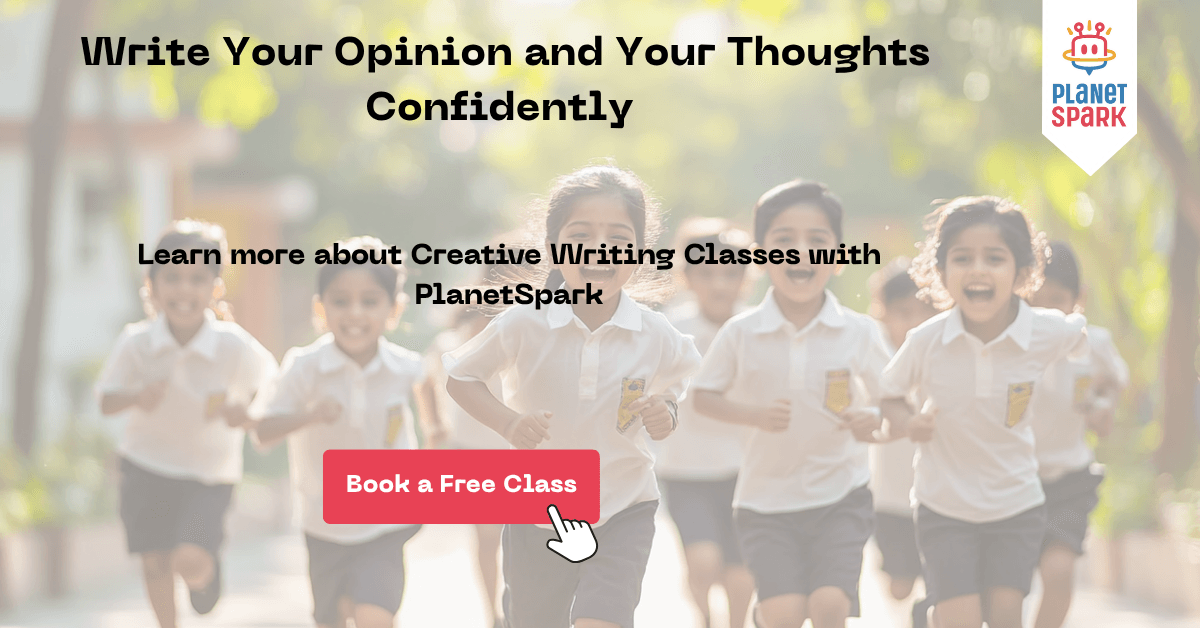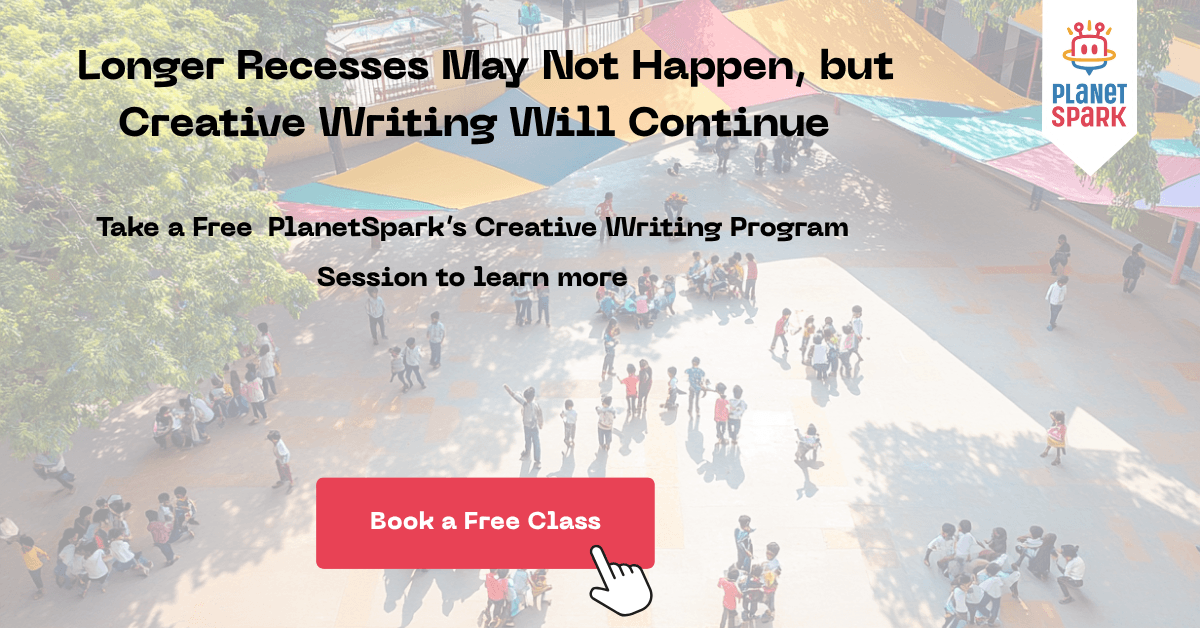Why Longer Recess at School Improves Learning & Growth

Table of Contents
- Chapter 1: Why Recess Matters More Than You Think
- Chapter 2: Scientific Evidence Supporting Longer Recess
- Chapter 3: Key Reasons Why Recess Should Be Longer
- Chapter 4: The Ideal Duration and Structure of Recess
- Chapter 5: What Happens When Recess is Shortened?
- Conclusion: Recess is a Right, Not a Reward
- FAQs About Longer Recess
- Why Choose PlanetSpark's Creative Writing Course?
- FAQs About PlanetSpark's Creative Writing Course
In today's fast-paced, achievement-oriented educational systems, recess often takes a backseat to academic instruction. But is that the right approach? Recess isn't just a 'break' from learning, it's a critical component of a child's development. Studies consistently show that longer recess breaks improve student behavior, cognitive performance, emotional well-being, and social growth.
At PlanetSpark, we understand how essential creativity and freedom of expression are in a child's learning journey. That's why our Creative Writing Course integrates moments of reflection, free writing, and storytelling, the mental equivalent of recess. In the same spirit, this blog explores why recess should not only exist but also be longer, more intentional, and protected in school curricula.
Chapter 1: Why Recess Matters More Than You Think
1.1. Recess Enhances Brain Function
Recess provides a necessary mental break from structured academic tasks. When children step outside to play, their brains get a chance to reset. This rest boosts concentration, memory retention, and overall classroom performance. Research has shown that students who take short breaks every 45 to 60 minutes are more likely to retain complex information and solve problems more efficiently.
Want to help your child build better focus through creative expression? Take a free trial of PlanetSpark's Creative Writing Course today.
1.2. Encourages Whole-Child Development
Children are not just students, they are growing human beings with physical, emotional, and social needs. Recess supports development across all these domains. Through unstructured play, students learn life skills that aren't taught in textbooks: problem-solving, leadership, negotiation, and empathy. Additionally, recess nurtures independence, emotional regulation, and the ability to collaborate with peers from diverse backgrounds.
1.3. Stimulates Creativity and Imagination
Free play is a breeding ground for imagination. Children invent games, make up stories, and explore roles, all of which promote divergent thinking. Creative writing, storytelling, and even visual arts are enhanced when kids regularly engage in imaginative play. Extended recess allows children to immerse themselves fully in creative activities without the pressure of time constraints.

Chapter 2: Scientific Evidence Supporting Longer Recess
2.1. Cognitive Benefits
According to a study published by the American Academy of Pediatrics, children who get longer and more frequent recesses perform better in attention tasks and are less disruptive in class. These cognitive benefits stem from the opportunity to process earlier lessons, enhance mental flexibility, and approach new tasks with renewed clarity.
2.2. Emotional and Behavioral Regulation
Playtime helps in emotional release, reducing stress and anxiety. A University of Colorado study found that unstructured time enhances self-regulation, resilience, and even happiness. Children who have regular recess are less likely to experience mood swings, behavioral outbursts, or social withdrawal.
Let your child unlock the same benefits through storytelling and journaling. Book a free trial class of PlanetSpark's Creative Writing Course.
2.3. Physical Health
Recess is often the only time during the school day when children get physical activity. According to the Centers for Disease Control and Prevention (CDC), at least 60 minutes of daily activity is recommended for school-aged children. Longer recess helps meet that goal. Moreover, regular outdoor play improves cardiovascular health, strengthens bones and muscles, and builds healthy habits for life.

Chapter 3: Key Reasons Why Recess Should Be Longer
3.1. Improved Academic Performance
Children who have longer recess breaks return to the classroom more focused and ready to absorb information. They are better at applying concepts, solving problems, and participating in discussions. Studies have shown that standardized test scores improve when physical activity is incorporated into the school day.
3.2. Enhanced Attention Span
Regular breaks reduce mental fatigue. Students are less fidgety and more attentive when they know they have had sufficient time to relax and unwind. Teachers also report fewer interruptions and greater productivity when students are given longer playtime.
3.3. Physical Stimulation and Vitamin D
Time outdoors allows children to run, jump, and play, which not only builds muscles and coordination but also exposes them to sunlight, a natural source of Vitamin D. This exposure is linked to improved immune function and emotional health.
Help your child translate that energy into written creativity. Sign up for a free PlanetSpark writing session.
3.4. Development of Social Skills
Longer recess provides ample time for peer interaction. Kids learn conflict resolution, cooperation, turn-taking, and empathy during free play. These social skills are foundational to emotional intelligence and can improve how students collaborate in academic settings.
3.5. Higher Attendance Rates
Students are more motivated to attend school when they enjoy their time there. Recess acts as a strong positive reinforcement, making school a fun and welcoming place. Some districts have even linked improved attendance and reduced tardiness to more engaging school environments that include longer recess.
3.6. Stress and Anxiety Reduction
A long, unstructured break allows children to reset emotionally. It provides a pressure-free environment that improves mood and emotional well-being. Students return to the classroom with more patience, kindness, and readiness to learn.
Chapter 4: The Ideal Duration and Structure of Recess
4.1. How Long Should Recess Be?
Experts recommend at least 60 minutes of unstructured play every day. Schools should consider dividing this into multiple shorter breaks or one extended midday recess. Countries with top-performing education systems, such as Finland, provide up to 75 minutes of recess daily.
4.2. Structured vs. Unstructured Time
While guided activities have their place, unstructured free time is essential. It gives kids the autonomy to explore their interests and play in ways that make sense to them. Unstructured recess fosters innovation, creative confidence, and self-directed learning.
Encourage independent thinking through storytelling, too. Explore a free session of PlanetSpark’s Creative Writing Course.
4.3. Recess for All Ages
Older students benefit from recess too. Mental fatigue affects high school students as much as young children, and breaks can improve their focus and emotional well-being. Brain development during adolescence still requires downtime for reflection and emotional regulation, making recess crucial at all educational stages.
Chapter 5: What Happens When Recess is Shortened?
5.1. Increase in Behavioral Problems
Schools that reduce recess time often experience a spike in disciplinary issues. Without a proper outlet, children may act out in class. The lack of time to decompress can result in irritability, aggression, and a lack of impulse control.
5.2. Decline in Academic Focus
Children without breaks may zone out, feel overwhelmed, or experience burnout, even at a young age. They may also develop negative attitudes toward school, reducing their long-term academic motivation.
5.3. Emotional Strain
Short recesses contribute to increased stress, social exclusion, and even signs of depression in children. For many students, especially introverted or anxious children, recess is a safe space to build confidence and reduce performance pressure.
Support your child’s emotional wellness with creative writing. Sign up for a PlanetSpark free trial class.
Conclusion: Recess is a Right, Not a Reward
Recess is not just a frivolous break. It is a fundamental part of education and development. Longer recess helps children build resilience, empathy, cognitive capacity, and emotional well-being. If schools truly aim to foster well-rounded, high-achieving students, extending recess time is one of the most effective ways to do it.
FAQs About Longer Recess
1. Do longer breaks have a positive impact on learning?
Yes. Numerous studies show improved academic and emotional outcomes when students have sufficient time for play and rest.
2. What are the repercussions of short breaks?
Short breaks can lead to poor concentration, irritability, and behavioral issues.
3. Should children be allowed to sleep during recess?
A short nap of 15–20 minutes can rejuvenate kids, especially younger ones, and help them refocus in class.
4. Are schools implementing longer recess globally?
Yes, several schools in countries like Finland, Japan, and even parts of the U.S. have begun incorporating longer recesses into their schedules.
5. Does recess help with social inclusion?
Absolutely. Longer recess allows children to form meaningful friendships and feel more included in the school community.
6. Can recess time improve classroom behavior?
Yes. Kids who have had time to release pent-up energy and socialize come back calmer and ready to learn.
7. Is recess beneficial for high school students?
Yes. Although recess is often only for younger students, older students benefit from mental breaks too.
Want your child to become a confident, creative thinker? Join PlanetSpark's Creative Writing Course today for a free trial!
Why Choose PlanetSpark's Creative Writing Course?
At PlanetSpark, we believe creativity and self-expression are essential to child development, just like recess. Our Creative Writing Course helps children articulate thoughts, build strong narratives, and express emotions with clarity and confidence. Here's how:
1. 1:1 Personal Trainers for Every Child
- Personalised coaching based on the student’s learning pace and style
- Instant feedback and encouragement
- Focus on writing, public speaking, grammar, and creativity
2. Customised Curriculum & Learning Roadmap
- Skill-based assessments and level-specific plans
- Targeted goals in grammar, fluency, vocabulary, and storytelling
- Adaptive progression based on regular performance reviews
3. SparkX: AI-Powered Video Analysis
- AI reviews of voice, body language, grammar, and structure
- Instant insights on strengths and improvement areas
- Visual growth tracking over time
4. AI-Led Practice for Speech & Storytelling
- Independent sessions with real-time feedback
- Simulates real-world speech delivery scenarios
- Enhances fluency, clarity, and articulation
5. Spark Diary: Build Daily Writing Habits
- Daily prompts and journal entries
- Encourages reflective and creative writing
- Builds confidence and discipline in young writers
6. Gamified Learning Tools
- Vocabulary games like Word Wisdom & Antonyms Quiz
- Grammar mastery through Grammar Guru Challenge
- Daily quizzes for revision and practice
7. Regular Parent-Teacher Meetings
- Transparent sharing of progress and challenges
- Joint planning of academic goals
- Active parent involvement in the child's learning journey
8. Comprehensive Progress Reports
- Evaluations on content, grammar, creativity, and confidence
- Detailed trainer feedback and suggested action plans
9. Interactive Learning Communities
- Debate Club, Story Writing Guild, Comedy & Podcasting Clubs
- Build peer networks and social communication skills
- Encourage team learning and performance
10. Sparkline: A Safe Creative Sharing Platform
- Post and share stories, poems, speeches, and videos
- Build a digital presence in a safe environment
- Peer appreciation boosts self-esteem
11. Talent Contests and Showcases
- Monthly competitions and open-mic events
- Prizes, certificates, and public recognition
- Helps students shine in front of real audiences
12. SparkBee: Fun Daily Language Quizzes
- Engaging grammar, spelling, and vocabulary games
- Helps build core language skills in a fun way
13. SparkShop: eBooks for Every Grade
- Digital books in grammar, reading, vocabulary, and writing
- Easy, fun, and affordable learning materials for home use
FAQs About PlanetSpark's Creative Writing Course
1. What age groups is the PlanetSpark Creative Writing Course suitable for?
Our course is designed for students aged 5 to 15 years.
2. How are trainers selected at PlanetSpark?
All trainers undergo rigorous selection, certification, and continuous training to ensure top-quality learning.
3. How long does the course last?
Course duration varies based on the child's level and goals. Typically, it ranges from 3 to 12 months.
4. Can I track my child’s progress regularly?
Yes. Parents receive structured progress reports and participate in PTMs every month.
5. What is SparkX, and how does it help?
SparkX is our AI-enabled tool that analyses your child's speeches and stories, providing actionable insights.
6. Is there a free trial available?
Yes! You can join a free trial class to understand our teaching style and curriculum.
7. How does PlanetSpark support writing practice outside of class?
With tools like Spark Diary, Sparkline, and SparkBee, students get daily writing and grammar practice in fun, interactive formats.
Personalized Communication Report
Record a video to get a AI generated personalized communication report for your child

Hi There, want to try these
tips for your child with
LIVE with our expert coach?
Let's check your child's
English fluency
